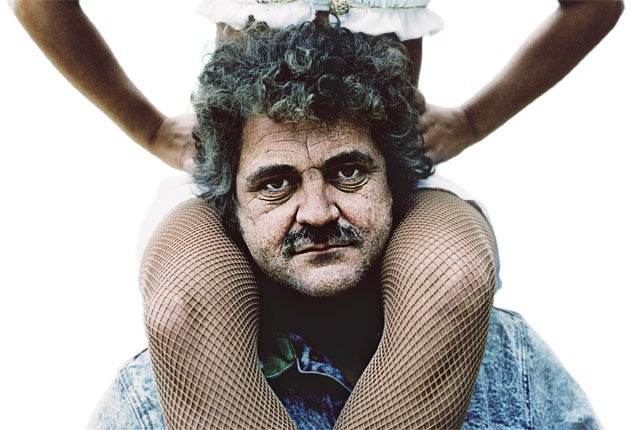Pierrot Bidon: Creator of Archaos and a pioneer of the New Circus

Pierric Pillot, aka Pierrot Bidon, was the creator of Archaos and one of the founding fathers of New Circus.
He had a profound influence on the development of the world of circus in the late 20th and early 21st century.
Born in 1954 in Mans, Bidon was 20 years old when he created his first circus, Circus Bidon, in 1975. The show worked the villages and small towns of France and Italy for 10 years with the athletic Bidon taking to the ring as a tightrope walker. It was a traditional travelling circus with 25 horses and exquisite gypsy caravans, but even when working a traditional circuit, a playful streak was evident; bidon can mean "can" or "flask", but there is little doubt in my mind that the various slang meanings, including "hot air" and "fake", were high in Bidon's mind when he named it.
Travelling in this way, he saw how little impact the industrial world had had on the circus, the form of which had remained virtually unchanged for nearly two centuries. "We live in an industrial world, which is just as wild and just as glamorous as all the nostalgic tinsel and tatty tigers," Bidon said. "So we decided not to reject but to embrace it."
He traded in horse and caravans for motorbikes and chainsaws and, in 1986, roared out with Archaos (meaning "Beginning"), a whole new take on the circus – an exhilarating, thrilling and authority-baiting fusion of infernal factory, car chase and circus. Pierrot's approach was anarchic and yet deeply rooted in the origins of circus. The troupe he gathered to take Archaos abroad was a disparate bunch united by his warm, patriarchal generosity and thrilling sense of invention and adventure, be that splitting an untaxed car in two on the Royal Mile in Edinburgh, training the few animals that were used in the show to perform a routine in which they taught their masters new tricks or unleashing another salvo of carefully choreographed anarchy.
Bidon entertained the masses with oxy-acetylene torches, angle grinders, motorbikes, chainsaws, Semtex and the odd bewildered chicken. Jugglers were in boiler suits while clowns strapped corrugated iron to their backs, wielded lump hammers and battered other clowns for laughs.
Archaos's shows in England were met with excitement and outrage – Bristol Council banned their show after a wave of hysterical press reportage – and Bidon gleefully used this, whipping up a frenzy that saw Archaos become the toast of Europe. And then, in 1991, it all collapsed. On the eve of a trip to America with the Metal Clown tour, the Archaos tent was destroyed in a storm and the company fell apart.
Others from Archaos went on to successful careers with Cirque du Soleil and more. Bidon created Circo da Madrugada out of a series of workshops driven by social programmes in schools and shanty towns with the dispossessed. He also created Circus Baobab, an extravaganza of dancing, high-risk acrobatics, juggling and clowning, sound-tracked by high-energy traditional West African music, and travelled the world working on spectacular shows for openings and more.
"New Circus is more traditional than the other circus," he said at the height of Archaos's fame. "Ordinary circus has become incorporated. It's dull. People are in it for the money and the spirit suffers. What we have tried to do is recapture the spirit and the passion of performing."
I employed him in 2004 to direct the Circus of Horrors, set up in 1995 to fill the gap left by Archaos, because, as a rock'n'roller – and as a family man – Pierrot approached everything he did with passion. He was never dull or incorporated. His spirit reinvigorated the modern circus. Without his input, it could have taken a great deal longer to reinvent and radicalise the form. He had known for a while that he was ill, but this did not dull his sense of rock'n' roll. His parting gesture was to give the peace and love sign in one hand and the third finger on the other.
Pierric Pillot (Pierrot Bidon), circus performer and director: born 1 January 1954; married Ana (two children); died Arles, France 9 March 2010.
Join our commenting forum
Join thought-provoking conversations, follow other Independent readers and see their replies
Comments